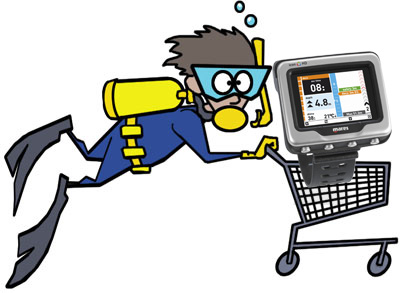Knowledge and curiosity are the foundation of every great discovery. The SDI Research Diver Course at our Los Angeles Dive School is designed to expand your understanding of underwater ecosystems, combining your natural curiosity with essential research techniques. With this course, you will see the ocean in an entirely new light, enhancing your ability to explore, document, and contribute to the preservation of our marine environments.
As a certified diver, the SDI Research Diver Certification will teach you the fundamental skills and knowledge required for effective research diving. By the end of the course, you will be equipped with the tools necessary to collect valuable data, explore new underwater environments, and make a meaningful impact on marine conservation.
Course Topics Include:
- Underwater Compass Navigation Project – Learn to navigate underwater efficiently.
- Local Ocean Food Chain – Understand the intricate relationships between marine organisms.
- Data Collection Techniques – Utilize slates and underwater cameras for accurate data recording.
- Underwater Mapping Project – Master basic techniques for mapping underwater environments.
- Basic Oceanography Session – Gain an understanding of the physical properties of oceans.
- Temperature Readings & Depth Soundings – Learn to measure and record environmental data.
- Fish Identification Project – Enhance your ability to identify local marine species.
- Algae Identification Project – Study the various types of marine algae.
- Diver Buoyancy Clinic – Perfect your buoyancy control to maximize your research diving.
Course Requirements:
- Advanced Open Water Diver certification or equivalent.
- Required Equipment: SMB & Finger Spool, Knife for safety, Underwater Flashlights, Compass.
Course Includes:
- Local California Fish Identification Slate.
- One morning classroom session to introduce research diving.
- 2-3 hour afternoon pool session to practice key skills.
- Two research dives conducted with an SDI Research Diver Certified Instructor.
- Course Assignments for hands-on learning.
- SDI Research Diver Certification Card upon successful completion.
Course Schedule:
-
Saturday Classroom:
- Learn dive planning, navigation, and measurement techniques.
- Study the ocean’s food chains, ecology, and marine organisms.
- Understand seasonal changes, marine biology, and the importance of Marine Protected Areas (MPAs).
- Dive methodologies including mapping, transects, and data recording.
-
Saturday Pool Session:
- Skills checkout: mask clearing, buoyancy, navigation, and running transects.
- Practice team coordination and the identification of marine life during transect runs.
- Learn how to lay a quadrant for sessile organisms.
-
Sunday Boat Session (3 Dives):
- Dive #1: Plan the dive (depth, time, compass navigation), find habitats, and run transects to record fish species and environmental conditions.
- Dive #2: Lay quadrants for sessile organism identification, take notes, and potentially capture photos without disturbing marine life.
- Dive #3: Continue applying research methods and refine your data collection skills.
Why Choose Research Diving?
- Quantify and Measure: Learn how to accurately measure what you see, contributing valuable data to marine biology and conservation efforts.
- Help the Ocean: You, as a diver, are an ambassador for the ocean. By engaging in research, you become a part of the solution.
- Understanding Ecology: Learn about marine food chains and the importance of each organism in maintaining a healthy ecosystem.
- Marine Organism Identification: Study fishes, invertebrates, and mammals (seals, sea lions, dolphins), gaining a deeper understanding of the diverse life beneath the surface.
Join us for the SDI Research Diver Course and expand your diving knowledge while making a meaningful impact on marine conservation. Whether you’re exploring kelp forests or coral reefs, this course will give you the tools to dive deeper into research and discover the wonders of the underwater world.

















